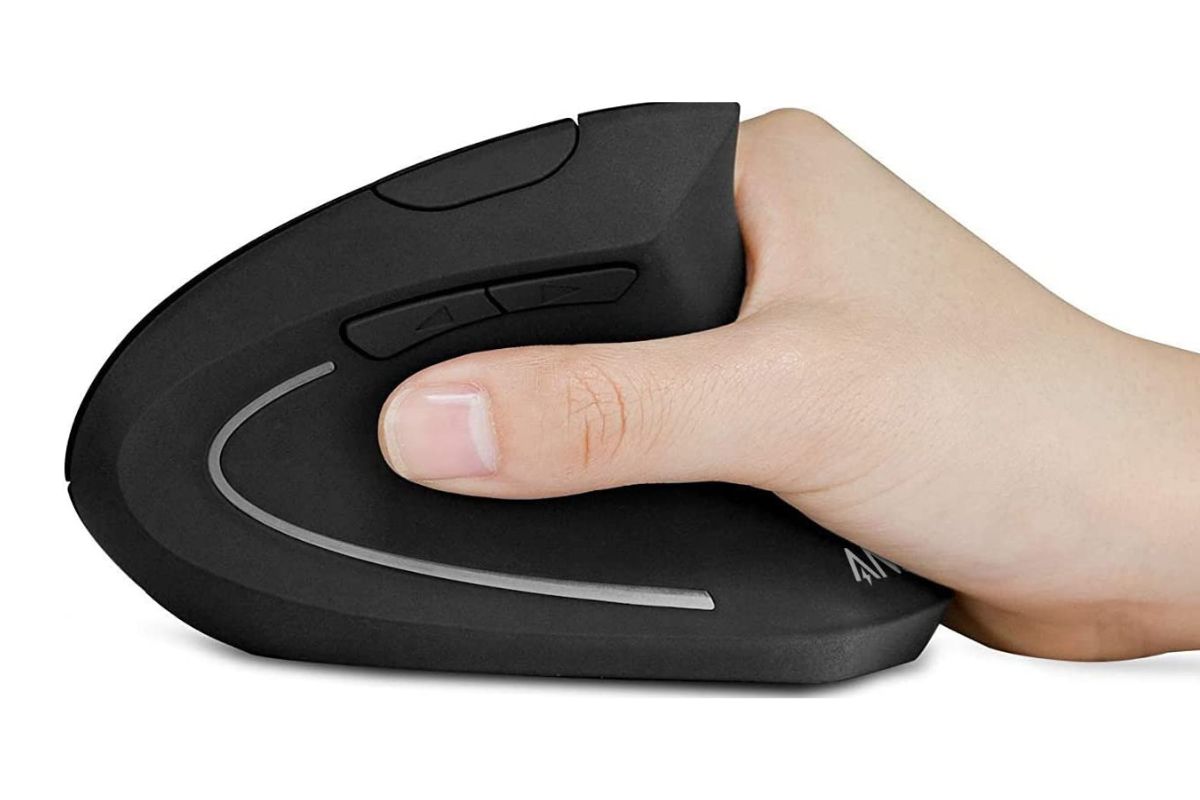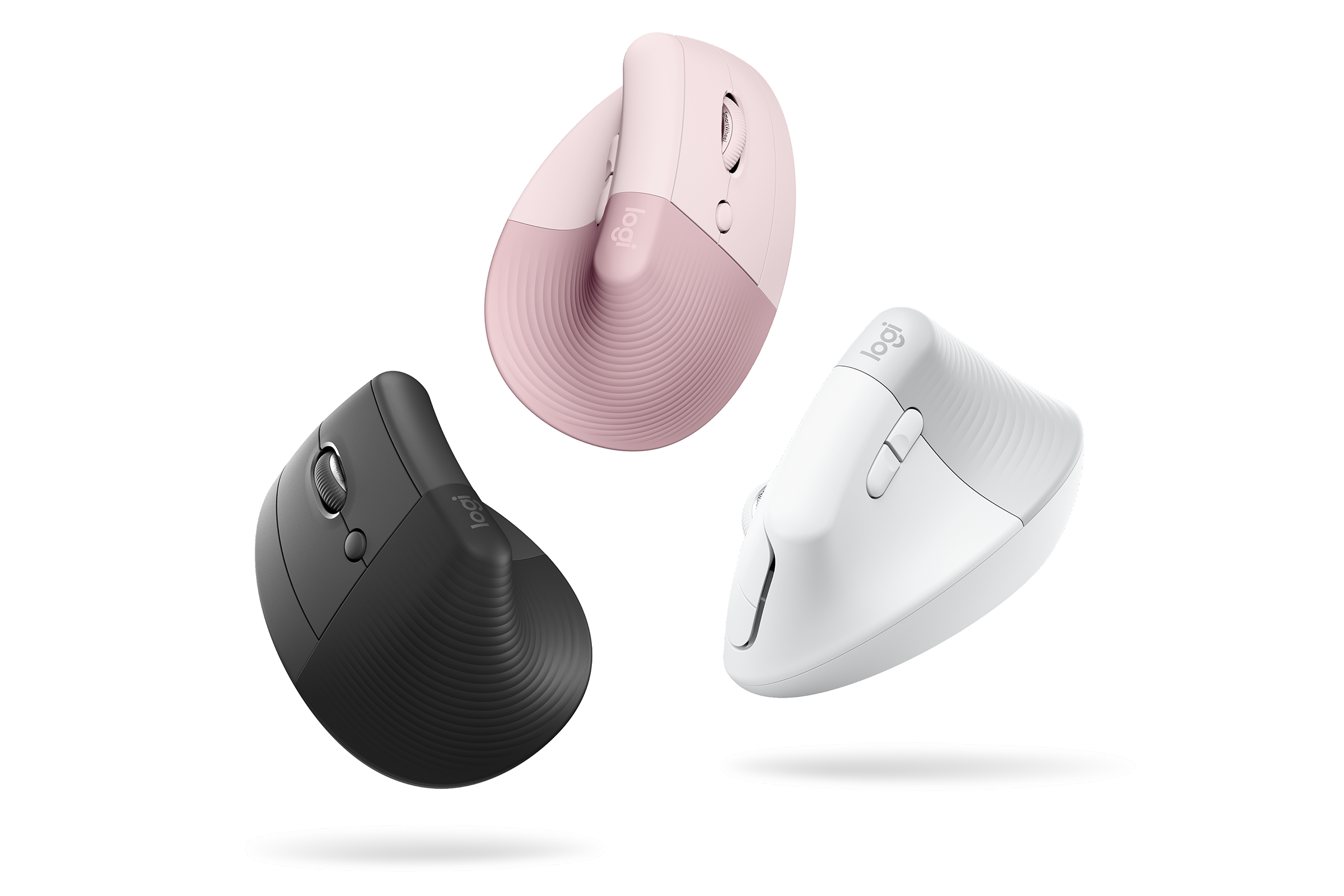
 Image: Anker
Image: Anker
Recently, I played the ever-loving crap out of a city-building game called Farthest Frontier. It wasn’t long before I started feeling shooting pains along the length of my mouse hand. Like most people, I use a standard run-of-the-mill PC mouse. There’s nothing real special or ergonomic about it. However, after days of hand cramps and sharp pains, I started looking into vertical mice. If you’re not sure what they are, join the club. I had no idea up until a week or so ago. Let’s venture down this rabbit hole together then.
So, what the heck is a vertical mouse?

Anker
Anker
Anker
Vertical mice are designed to keep your hand in a more natural position, which reduces strain on your wrist. It stands upright and the buttons and scroll wheel are located on the side instead of the top. This encourages you to move your elbow instead of your wrist. Many of them even include a DPI button that changes the mouse speed. Interestingly enough, vertical mice have been around since 1994. Who knew?
They were invented by Jack Lo, who came up with the design after experiencing pain from using a traditional mouse. The “handshake design” helps eliminate any arm twisting. It took him a long while to license his invention, though. Microsoft even rejected him at one point. After finding a contract manufacturer in Asia to help him produce his product, his first vertical mouse, the Evoluent VerticalMouse, was finally released in late 2002. If you want to read more about the history of Lo’s vertical mouse, check it out here.
PCWorld approved
Logitech Lift

 Read our reviewPrice When Reviewed:$69.99Best Prices Today:$69.99 at Amazon | $69.99 at Best Buy | $69.99 at Dell Home
Read our reviewPrice When Reviewed:$69.99Best Prices Today:$69.99 at Amazon | $69.99 at Best Buy | $69.99 at Dell Home
Vertical versus flat
So, what are the benefits of using a vertical mouse over a horizontal one? A vertical mouse puts your hand in a neutral handshake position. Essentially, it allows you to use the mouse with your forearm instead of your wrist. This position also prevents you from turning your wrist, which reduces pressure on the median nerve. It’s supposed to lessen muscle soreness and arm pain, especially if you’re doing a lot of scrolling. It may even help those who suffer from carpal tunnel syndrome.
Most people use flat mice. I’ve been using one since I was tall enough to reach a computer desk. That said, now that I’m in my mid-thirties, I’m noticing a lot of discomfort after using one for long periods of time. Unlike the vertical variety, you operate a flat mouse by moving your wrist and not your forearm. Frequently twisting your arm and using the scroll wheel in a repetitive fashion can result in hand pain and discomfort. I’m no medical doctor, but having experienced this kind of pain firsthand, I can tell you it really sucks.
Should you buy one?
That’s entirely up to you! If you’re experiencing a lot of pain and hand cramping from a flat mouse, then picking up a more ergonomic peripheral just makes sense. I’m not going to stop playing the heck out of those city-builder games anytime soon, so I might as well pick up a vertical mouse for those marathon gaming sessions of mine. I’m not getting any younger (boo) either and I don’t want to be in pain every day. If a vertical mouse is the potential solution to that problem, then maybe it’s high time I give it a whirl. PCWorld editor Alaina Yee gives high marks to the Logitech Lift vertical, which comes in both right- and left-hand options. I’ll start there.
Author: Ashley Biancuzzo, Associate Editor

Ashley is a professional writer and editor with a strong background in tech and pop culture. She has written for high traffic websites such as Polygon, Kotaku, StarWars.com, and Nerdist. In her off time, she enjoys playing video games, reading science fiction novels, and hanging out with her rescue greyhound.
Recent stories by Ashley Biancuzzo:
Razer’s blazing-fast Basilisk gaming mouse is 43% off todayAmazon’s Big Spring Sale: The 25 juiciest tech deals I’ve foundSave $76 on this ultra-fast Razer gaming mouse



